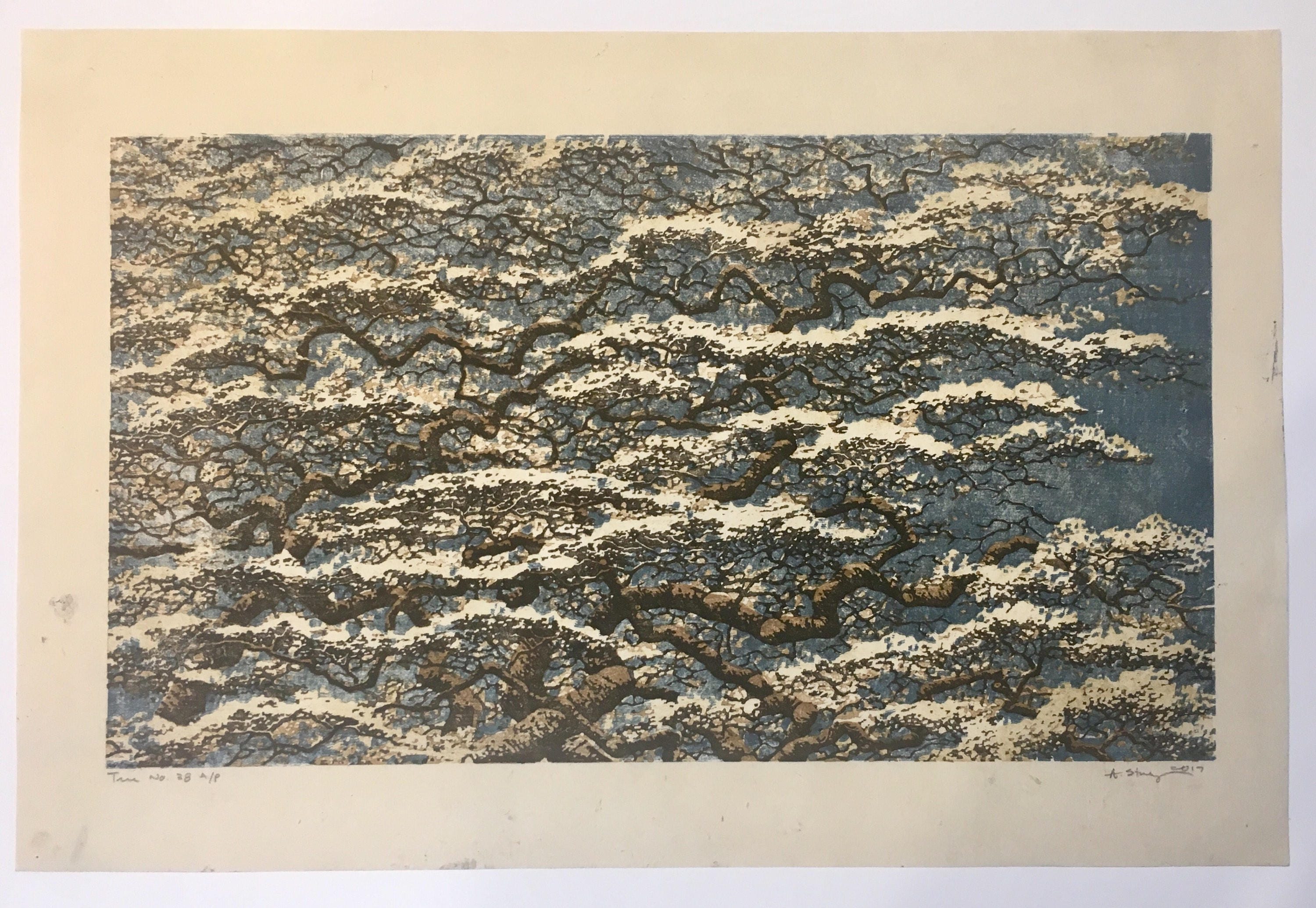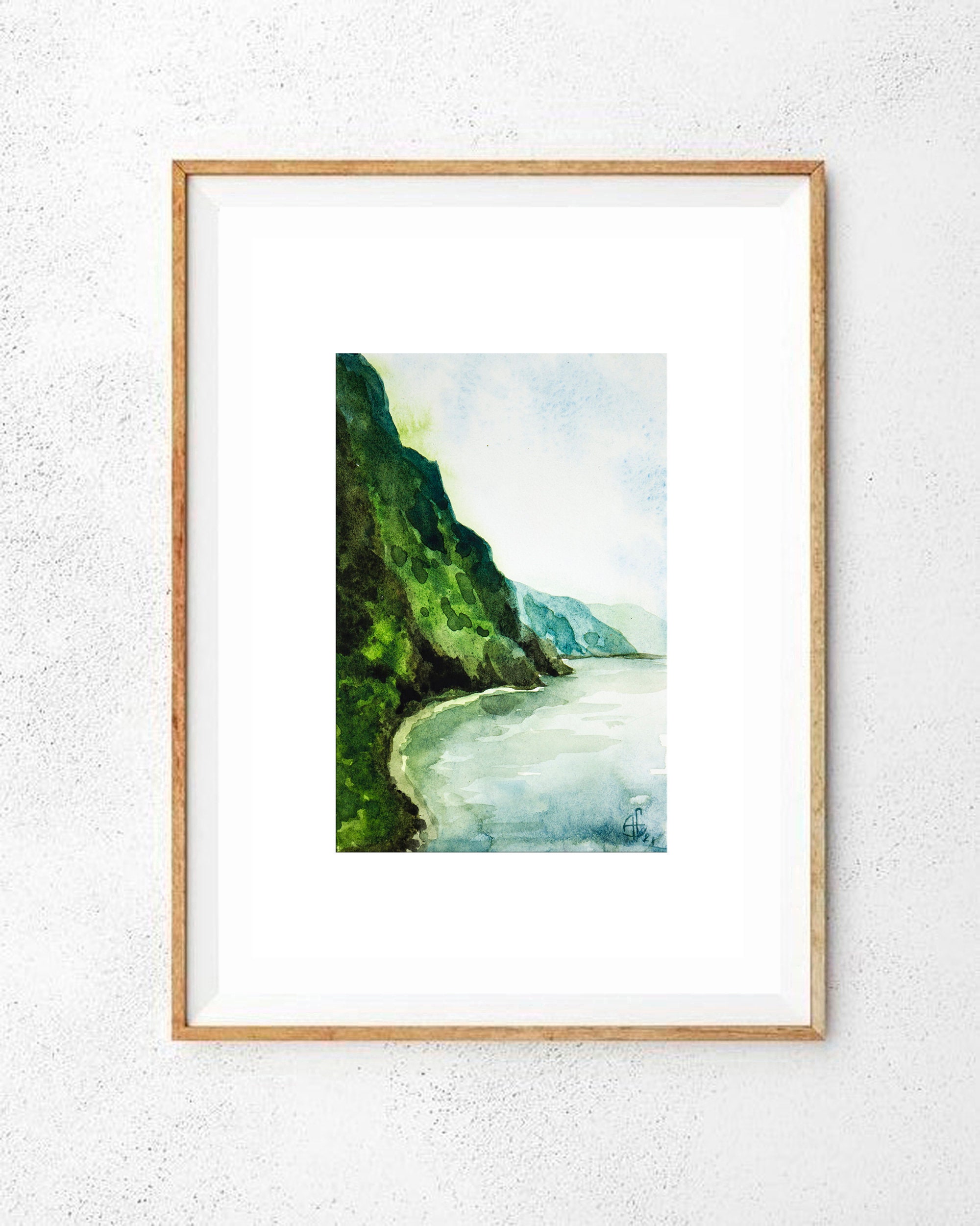

So it's much easier for me to be inspired by my sketches though I often will use my photos to at least see the details, and then decide how important it is to try to get them into the work. And as I've said probably a million times over the course of this blog it's next to impossible for me to get that feeling of life when I'm working from photos. They ended up being somewhat clumsy works but they still captured the life of the birds. Though not a field sketch it is based on and inspired by them.I think it was in May that I did some field sketches of both Spotted and Solitary Sandpipers at Morris Arboretum. I'll go on a bit more about the SWLA show later but for now I'll try to finish a thought and stick with this print. The three framed works waiting to be shipped off to 'The Natural Eye', accompanied by the hope that at least one of them would get in! But having three of my works in The Society of Wildlife Artist's annual show 'The Natural Eye': Purple Finch and Hairy Woodpecker at Andorra' has been a bit of a distraction, though certainly a pleasant one. I had been planning to write my next post on my field sketches, both those done at Cape May in May and also those done around here. And I still don't have the final design, or colors. I'm not sure if I've ever shown a work in progress from my Moku Hanga prints. Working proof of moku hanga print by Ken Januski.
#Moku hanga watercolor paints free#
All matting and framing materials are acid free and archival.Spotted, Solitary and Least Sandpipers. I primarily use Rives, a 100% cotton French paper. I print some blocks with a Bokashi (gradation.) Usually I print the lighter colors first, and the darkest one last. Multiple blocks are used, usually one for each color overprinting two colors creates additional colors on the print. Then, I place dampened paper on the block, and rub it with a hand-held baren to transfer the impression. I apply light-fast water-based pigments and rice paste to the raised areas, mixing them with a brush directly on the block. On each block, I carve away areas that will not be printed leaving the raised (relief) image. After figuring out how many woodblocks are needed to separate the colors in the design, I transfer the shapes in reverse to woodblocks. I begin an image with sketches or paintings done on-site, and then simplify the design, focusing on the lines of movement and the essential shapes that define the image. During the cooler months, I study these watercolors and select the ones that best capture the spirit of place to use as designs for woodblock prints. Distinctive trees, crashing surf and rocks, bogs, boreal forests, marshes, and active skies are frequently my subjects. I am particularly drawn to Downeast Maine the Schoodic Peninsular, Steuben, Addison, and Lubec. I favor the undisturbed landscape, usually nature preserves, state parks, wildlife sanctuaries, or “undeveloped” coastal areas.

I paint numerous watercolors en plein air, during the warmer months, returning to favorite places each year. The process is contemplative and low-tech with distinct steps: designing an image, carving the blocks and experimenting with colors while proof printing the blocks, refining the blocks, exploring which colors and image needs, and eventually printing the image. Gradually over the next two years I refined my skills and understanding of the process, and color woodblock printmaking became my primary medium. I was a painter for over 30 years, before I began making color woodblock prints in the Moku Hanga technique (Japanese watercolor woodblock prints) in 2007. In 2011 I began to exhibit and sell my woodblock prints at outdoor art shows in New England and has received several awards. Since retiring from teaching in 2016, I have had more time to pursue making larger and more complex woodblock prints. I have been painting at various locations in Downeast Maine and Grand Manan, NB for many years.


In 2016 I was an Artist in Residence at Acadia National Park in Maine for the month of June and this was an incredible opportunity to immerse myself in the coastal landscape. I live in Northfield, Massachusetts with my husband, and I was an art teacher at Stoneleigh-Burnham School for Girls in Greenfield, Massachusetts from 1987 to 2016. Later in 1992 I received Post Baccalaureate Teacher Certification from Westfield Sate College. As a child I spent countless hours painting and drawing and eventually studied art in college, attending Greenfield Community College, The School of the Art Institute of Chicago and receive a BFA from the University of Massachusetts, Amherst with a major in Painting and a minor in Art History in 1979. I was born in Boston, Massachusetts, and grew up in the suburb of Norwood. A BIT OF MY HISTORY AND MOKU HANGA PROCESS


 0 kommentar(er)
0 kommentar(er)
